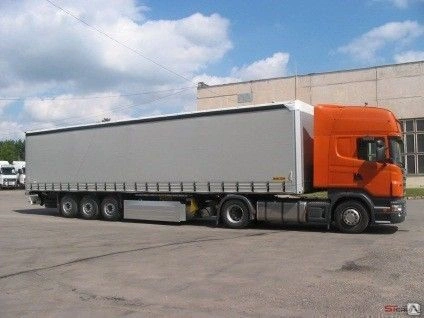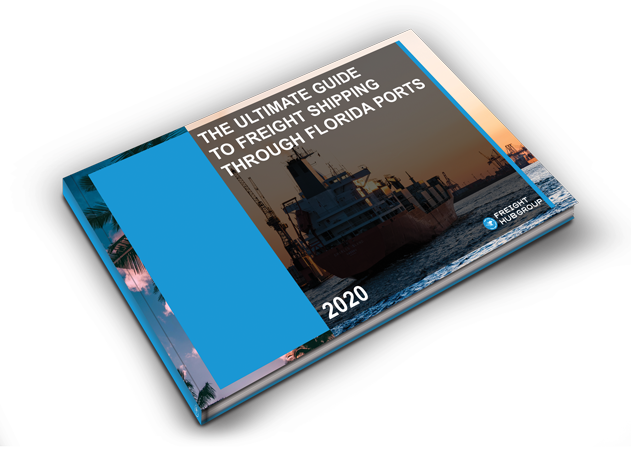Flatbed Transportation: Shipping Facts and Types

If you’re looking for a transportation option that is both economical and reliable, flatbed shipping may be the perfect choice for you. Flatbed trucks are designed to transport large or awkward items, making them ideal for heavy or bulky cargo.
But before you decide to use flatbed transportation for your next shipment, it’s important to understand the basics of this type of flatbed shipping. In this blog post, we’ll discuss what flatbed transportation is, the different types of flatbed trucks, and six facts about flatbed shipping that you need to know.
What Is Flatbed Transportation?
Flatbed transportation is a specialized form of freight transport taller that uses large trucks with specially designed beds. The cargo can be unloaded from the truck in any direction, and the truck can move along a route at speeds up to 50 mph.
Flatbeds are used for shipments that do not fit within the dimensions of standard truck trailers or those that require special handling, such as goods that cannot be loaded or unloaded from a dock. Flatbeds are also popular for shipments that must travel long distances over rough terrain without being damaged.
A flatbed’s design allows for cranes and forklifts to load products from all angles, which makes it faster and easier to get the cargo onto and off of the truck. Flatbeds are often used when there is no other option available, such as when transporting sensitive materials or during natural disasters where roads may be closed due to flooding or debris accumulation.

Flatbed Cargo
Flatbed freight cargo is a type of freight that is transported on a flat surface, such as a truck bed. These cargo can be shipped in bulk or individual items.
Bonded warehouses are used to store and transport large quantities of goods in a safe and secure environment. The warehouse is divided into sections called bays, each of which can hold different types of merchandise. When the bay needs to be filled, the appropriate section’s contents are transferred onto the flatbed trucks for transportation.
Flatbeds offer several advantages over other shipping methods:
- Flatbeds are more efficient because they can carry more weight with less space than other shipping methods; this makes them ideal for transporting bulky items or products that require special handling (for example, hazardous materials)
- This kind of shipments arrive at their destination faster than traditional shipments because there is no need to unload and reload the shipment; this saves time and money for both you and your customer
- Their loads can easily be shifted around within the warehouse if necessary – this allows businesses to optimize their storage space according to changing demand
Types of Flatbed Trucks:
Flatbed trucks are the workhorses of the shipping industry. They’re used to transport goods long distances, and their popularity has only grown in recent years as more businesses adopt e-commerce.
There are a few different types of flatbed trucks, each with its own unique features and benefits:
- Lowboy Trailers: Lowboy trailers are the most common type of flatbed truck, and they’re typically used for transporting goods that weigh less than 40,000 pounds. Depending on how many axles are used (weight of the trailer and load), the additional weight capacity can be up to 80,000 pounds. These trailers have a low profile so they can navigate tight spaces, and they also feature an extendable ramp so loading and unloading are easy.
- Step Deck Trailers: Step deck trailers are similar to lowboys in terms of their size and capabilities, but they offer additional features like a raised platform on top that makes it easier to load heavy items onto the trailer. This platform also makes it possible to stack multiple step decks together for increased cargo control capacity. A step deck trailer can carry a maximum load weight of 48,000 pounds.
- Stretch double drop trailer: This type of flatbed trailer has two drop decks that can hold cargo in separate compartments. The stretch feature allows the trailers to move easily over uneven terrain, making them ideal for transporting heavy loads across difficult terrains such as mountains or deserts. This trainer typically has a 25- to 29-foot well at its rear deck and middle portions, which allows loads up to 10 feet tall. In the case of a stretch double drop, the maximum legal freight weight is 45,000 pounds.
- Removable Gooseneck Trailers (RGN): RGNs are similar to stretch double drop trailers but have one more advantage; they can be attached and detached from trucks using a gooseneck system, which makes them easier to maneuver on narrow streets and highways. RGNs or Removable Gooseneck Trailers have a maximum legal load weight of 42,000 pounds.
- Conestoga Trailers: Conestogas are popular among businesses that need transport capacity for large items like machinery or furniture but don’t want the weight of a traditional truckload trailer weighing down their fleet. The maximum legal freight shipping weight of the Conestoga trailer is 42,000 to 45,000 pounds.
- Sidekit Trailers: Side kits are designed specifically for small-to-medium size shipments where space is at a premium. The maximum weight that can be hauled by a side kit trailer is between 42,000 and 45,000 pounds

Flatbed Shipping 6 Facts:
There are a few things you need to know about flatbed shipping before making the decision to work with a 3PL.
- First and foremost, weather impacts shipments. If it’s raining or snowing outside, your freight will be delayed or canceled altogether.
- Second, working with a 3PL can simplify the process of getting your cargo on its way.
- Flatbed trailers complicate cargo security, so by having a third party handle the event logistics for you, you can focus on other aspects of your business.
- Finally, flatbeds are most often used for over-dimensional freight – meaning that they’re too big to go through standard truck routes.
- Flatbeds are easy to use and have a low cost of ownership, making them an attractive option for businesses of all sizes
- They are reliable way to transport goods, ensuring that your products arrive on time and in the condition you expect them to be in time. By using a 3PL, you can avoid any delays caused by this type of traffic.
So if you’re looking for an efficient and reliable solution for shipping your goods around the country, look no further than flatbed shipping!
Recent Posts
Watch our Podcast

THE ULTIMATE GUIDE TO FREIGHT SHIPPING THROUGH FLORIDA PORTS
When it comes to ocean freight shipping in Florida, there is a lot to know to ensure you follow the appropriate steps when shipping into and out of Florida Ports.
Just enter in your email address and receive your FREE E-Book in minutes!